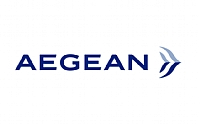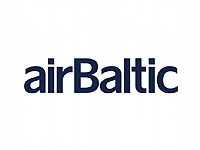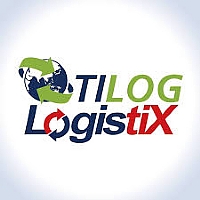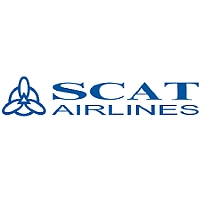Qantas Group HY19 Results

I’m pleased to report that the Qantas Group delivered a strong result for the first half of financial year 2019.
It’s a result that shows what a resilient business we’ve become.
SUMMARY OF RESULT
At the topline, our Underlying profit before tax was $780 million while statutory profit was $735 million.
Compared with our record result of last year, that’s a drop of $179 million at the underlying level – but that’s despite a $416 million increase in our fuel bill alone. For the business to recover so much of that extra cost, particularly given how fast the oil price rose, shows that we’re well positioned.
So does another set of record earnings in Qantas Domestic, Jetstar Domestic and Qantas Loyalty. We’ve done that while facing additional cost pressures from a falling Australian Dollar and other items.
It’s this resilience that gives us confidence about our full year result, and enables us to keep investing and keep delivering shareholder returns.
SEGMENT HIGHLIGHTS
Turning briefly to some highlights from the half.
All parts of the Group had a very strong unit revenue performance – up almost 6 per cent.
DOMESTIC
A lot of that strength was in domestic, where the dual brand combination of Qantas and Jetstar continues to have significant leadership in market share and margin.
That comes largely from both airlines delivering more for customers. Qantas, with free wi-fi, new lounges and high frequency of flights. Jetstar, with its network of leisure destinations and low fares – in fact, almost two thirds of its seats sold domestically and internationally for less than $100.
Balancing supply and demand by having the right capacity settings was also key. Broadly, the domestic market remains well balanced. Where there are opportunities, we’ll grow into them. The resources sector is a good example: we’re increasing our capacity within Western Australia by almost 10 per cent because of the demand we’re seeing.
There were some capacity limits in the first half, as some of our pilots were taken offline to train in new aircraft types – which is a consequence of our fleet renewal and the promotional opportunities that come with it. We don’t expect this to be a significant issue in the second half.
INTERNATIONAL
Internationally, our performance was heavily impacted by higher fuel costs, mostly because of the long-haul nature of our network and the effect that has on fuel burn. That’s reflected in the results we’re reporting today: you can see that despite an increase in revenue, Qantas International saw a drop in underlying profit, mostly because it had to cope with a fuel bill that rose by $219 million.
We remain very positive about the fundamentals of Qantas International. It received another three Dreamliners in the first half, taking the total fleet to eight. And as expected, they are steadily transforming the economics of the routes they fly.
As part of our ongoing fleet renewal, several 747s will be retired this financial year. We’re on track to retire the last one by the end of calendar 2020. With it will go a lot of other overheads – spare parts, training requirements and the higher maintenance and fuel burden associated with these older aircraft.
Qantas International is also seeing the benefits from the network changes that we made about a year ago on Singapore, London and the TransTasman. Competition is very strong – and you can see that in the value of some fares on offer – but broader market capacity growth is slowing.
Jetstar International performed well, especially on its key routes like Bali. Jetstar Airlines in Asia were impacted by fuel and higher airport charges, while Jetstar Japan remained profitable in the half.
LOYALTY
Qantas Loyalty achieved another record result with profit up 4 per cent. This was driven by the fundamental strength of the Frequent Flyer program and its growing list of retail partners, as well as continued revenue growth from new ventures – like health insurance and financial services.
The result highlights the continued demand for Qantas Points and their ability to influence consumer choice. Credit cards that earn Qantas Points, for instance, grew by 4 per cent compared with a decline of 1 percent for the market.
WASTE INITIATIVE
As an iconic brand, Qantas has always taken its place in the community to heart. We understand that being profitable is important, but we have to be more than that.
Where there’s an opportunity to leave a positive mark, we take it. Gender equality, Marriage equality. Indigenous recognition.
As a big business we have a big impact on the environment. For several years we’ve had a series of targets to reduce that impact, and we’re on track to reach them. By 2020, for instance, we’ll have cut electricity use by almost 40 per cent.
Today, I’m pleased to announce a step change in our efforts.
In the process of carrying 50 million people, we generate some 30,000 tonnes of waste in Australia each year. That’s the same weight as about eighty 747s.
Across Qantas, QantasLink and Jetstar we want to reduce our waste to landfill by 75 per cent and remove 100 million single use plastic items per annum. And we’ll do it by the end of 2021.
It’s the highest waste reduction target set by any airline in the world and it goes well beyond the recent European Union ban on single-use plastics in scope and speed.
Our coffee cups will be recycled. Our boarding passes and crew manuals will be replaced with paper-free alternatives. Even plastic frequent flyer cards are going digital.
Reducing our waste isn’t just the right thing to do, it’s good for business.
It will take time, but we’re already starting – and we’ll be asking our industry, regulators, customers and our people to help.
INVESTING IN OUR SHAREHOLDERS, CUSTOMERS AND PEOPLE
Because at the end of the day, the core of our business is people – those who invest in us, fly with us and make up the Qantas Group team.
For our investors, we’re announcing another $500 million to shareholders: made up of a 12 cent fully franked dividend and a share buy-back.
For our customers, we continue to upgrade their experience with better lounges and aircraft. We’ve extended our resident fare program in key regional communities. And we continue towards the last frontier of global aviation with Project Sunrise, which is inching us closer to flying non-stop from the east coast to London and New York.
For our people, we continue to offer opportunities. New aircraft mean new training and promotion opportunities for our pilots, engineers and cabin crew. And our new Pilot Academy will train up to 500 new pilots a year for the Qantas Group and the broader industry.
And we’ll continue to work for a fairer deal from Australia’s monopoly airports. The travelling public is very familiar with high car parking costs when they fly. Sometimes, it’s more than the air fare.
Well, the pricing approach these airports take to airlines is similar and that cost is ultimately paid by passengers. We think it’s a handbrake on the industry and we’re going to keep pushing for better deals and proper reform.
CONCLUSION
Looking ahead, we believe the Qantas Group is well positioned.
Forward bookings remain strong. Competitor capacity growth has slowed internationally and is relatively flat domestically. Our ongoing transformation program is on track. And oil prices have declined from the peaks we saw late last year.
These factors point to a strong second half, and we expect to completely recover our increased fuel costs by the end of this financial year.
We are mindful of potential signs of weakness in the broader economy and we’re always adjusting capacity to meet demand in individual markets – but overall revenue and yield indicators remain positive.
Above all, the resilience we’ve built into the business gives us plenty of confidence about our performance going forward.
Thank you.












































































